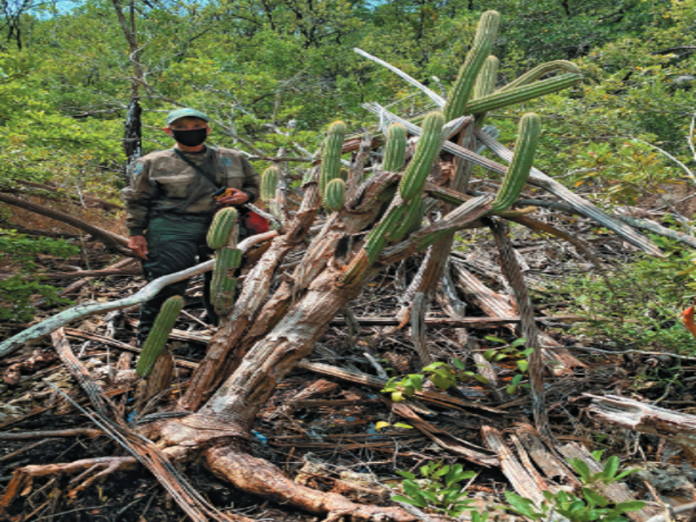The Key Largo Tree Cactus Has Become The First Species To Be Decimated By Swifts In Sea Levels
Sunday, August 4, 2024, 4:30 P.M. ET. 3 Minute Read, By Elaine Metz, PhD. Environmental Science: Englebrook Independent News,
KEY LARGO, FL. For the past decade or so, a team of researchers, led by Jennifer Possley from the Fairchild Tropical Botanic Garden, has been monitoring the majestic and rare Key Largo Tree Cactus, which once flourished across the Florida Keys but no longer exists throughout the island chain.
The Key Largo cactus was first discovered in the United States in 1992 in the John Pennekamp Coral Reef State Park, and it was the only known colony in the Country. Stands of this species can still be found in areas of the Caribbean, including Cuba, Puerto Rico, and the Bahamas.
The team’s recent paper, published in the Botanical Research Institute of Texas, reported on the monitoring of the Florida Keys colony. In 2011, there were approximately 150 individual Key Largo tree cactus, but the authors noticed a sharp decline of nearly 50% between 2013 and 2015.
It was thought that animal herbivory caused this dramatic decline, but the remaining colony was reduced by another 50% in 2016, leaving only 28 individual cactuses. The continued degradation was found to be caused by a combination of sea level rise, rising tides, and an increase in storm severity.
As most of the Florida Keys island chain sits just 5 meters above sea level, its ecosystems are highly vulnerable to rising sea levels and rising tides. The inundation of saltwater due to rising sea levels and storm events causes most plants to become stressed. If the duration of saltwater inundation increases, plants are prevented from attaining the necessary nutrients for their survival.
In 2021, with the years-long decrease and with just a few of the cactuses remaining, researchers decided to remove the remaining healthy individual plants so they could be relocated to a protective nursery environment to grow and increase in numbers. Although there are plans to reintroduce the Key Largo tree cactus back into the Florida Keys, researchers say due to the low-lying position, a suitable location may become challenging.
Possley, the lead author of the study, has said that the loss of the Key Largo tree cactus may, unfortunately, be a “bellwether for how other low-lying coastal plants will respond to climate change.


